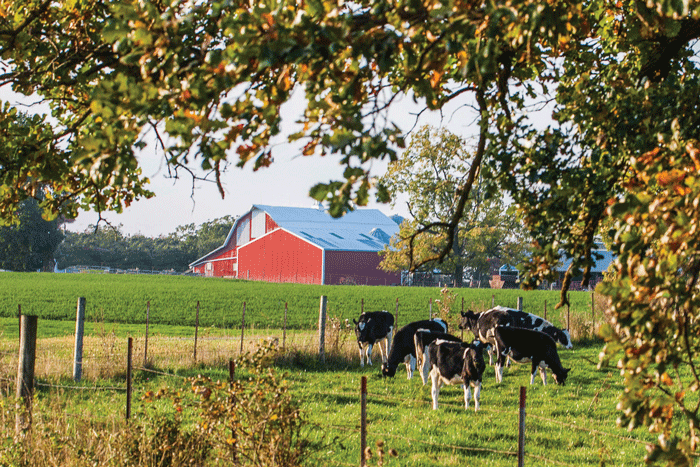
As the spring calving season gets underway, we often feel a sense of relief when we get live calves on the ground and our attention then turns to the remaining cows that are yet to calve. However, we shouldn’t lose focus of the nursing cows and their increased dietary needs. Now, it requires protein and energy not only to maintain flesh and core body functions during inclement weather, but also to fuel milk production, and Mother Nature dictates that if a cow’s protein and energy requirements are not adequate to satisfy all these biological demands, she will sacrifice her body mass to provide for the newborn nursing calf. Dr. Glen Selk, Oklahoma State University Emeritus Extension Animal Scientist, offers a concise overview of the nursing cow’s increased protein and energy needs.
Beef cow owners have known for years that body condition at calving time is a critical determinant in the re-breeding performance of the cows during the next breeding season. Another key factor that impacts return to estrus cycles and re-breeding is the maintenance or loss of body condition after calving and before breeding. Cows losing body condition after calving and before the breeding season will be slower to return to heat cycles and rebreed at a lower rate. Therefore it is necessary that the cow manager understand the change in nutrient requirements of beef cows as they change from gestating cows to early lactation cows.
Using an example of a 1200 pound cow in late gestation, one can examine the nutrient increases as she delivers the calf and starts to lactate. Look in the Oklahoma State University Extension Circular E-974 Nutrient Requirements for Beef Cattle. A 1200 pound late gestation cow requires 1.9 pounds of crude protein daily and 12.9 pounds of Total Digestible Nutrients (TDN). She can consume voluntarily 24 pounds of dry matter feed/day. The same cow after calving will weigh at least 100 pounds less (birth weight of calf, placenta, and fluid loss). An 1100 pound cow in early lactation requires 2.9 pounds of protein each day. That is a 52% increase in protein needs. Her energy requirements go up substantially as well. She needs 16.8 pounds of TDN each day (if she is an average milking beef cow). This represents a 30% increase in energy intake per day. Her daily dry matter intake also increases from 24 to 29 pounds but this represents only a 20% increase. If the 30% crude protein supplement being consumed is increased by 3.3 pounds, the protein requirement is met and most of the additional energy needs are fulfilled. Her voluntary increase of 2 pounds of hay per day should make up the remaining gap.
As we examine this example it is very clear that the cow will voluntarily consume a small increase in dry matter, however her needs in protein and energy both increase in larger percentages. Therefore an increase in both diet quality and quantity is necessary after calving to insure that body condition is maintained into and through the breeding season.
As a follow-up to Dr. Selk’s comments, I would remind you that cows can suffer some dietary deficiencies and still provide for the calf, but it will be at the expense of her own body condition and, as Dr. Selk points out, that has repercussions for recycling and rebreeding. In other words, the current body condition on nursing cows will have an impact on next year’s calf crop, and remember that reproductive efficiency is the most significant economic measure of a cow/calf operation.
Follow me on Facebook @ https://www.facebook.com/leland.mcdaniel
Oklahoma State University, U.S. Department of Agriculture, State and Local Governments Cooperating. The Oklahoma Cooperative Extension Service offers its programs to all eligible persons regardless of age, race, color, religion, sex, sexual orientation, genetic information, gender identity, national origin, disability or status as a veteran, and is an equal opportunity employer.